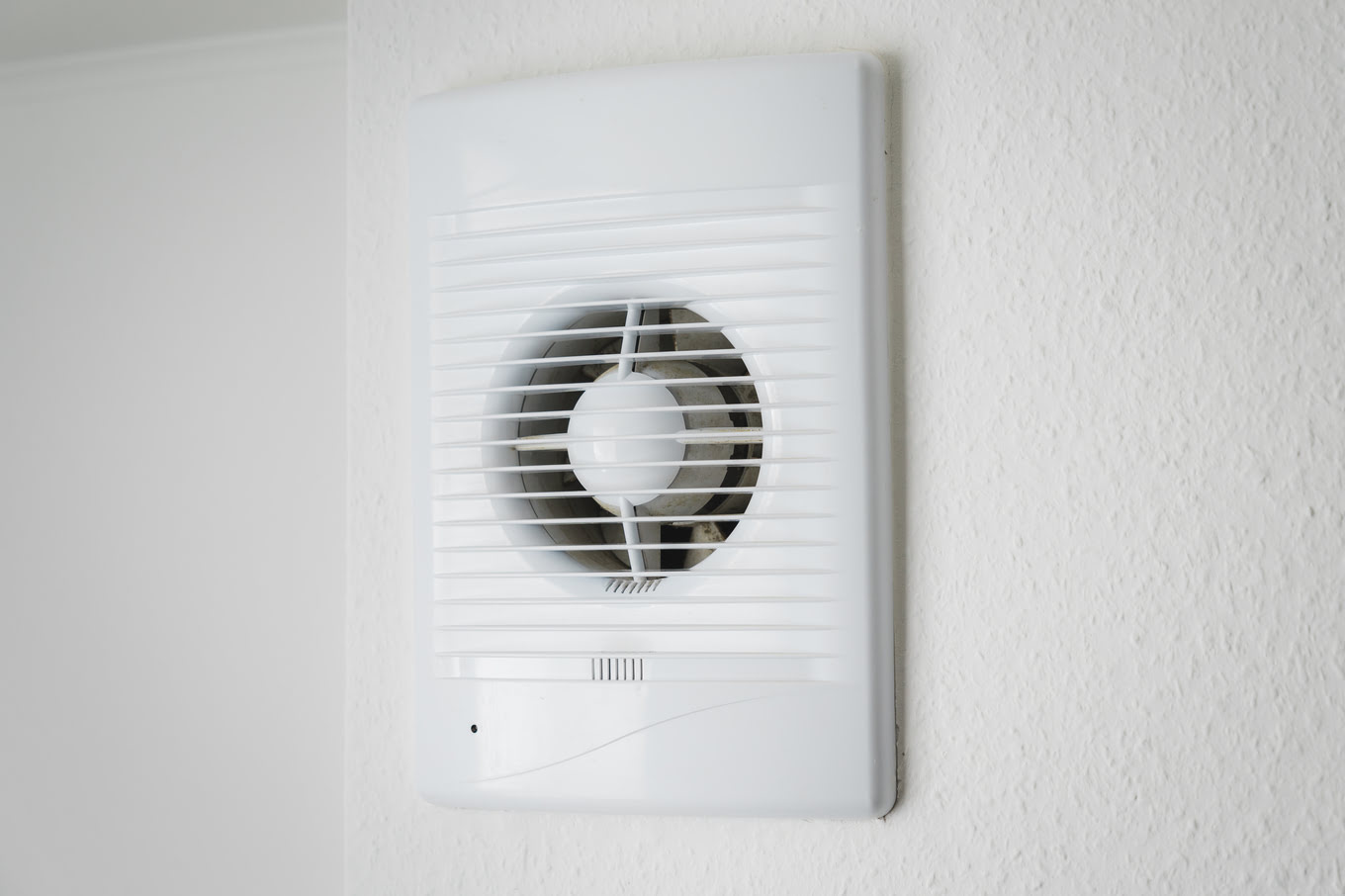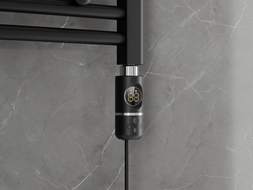
Proper ventilation is crucial to ensure fresh air, remove excess moisture, prevent the growth of mold and fungi, and eliminate unpleasant odors.
What kind of ventilation in bathrooms ensures adequate air flow? Find out by continuing to read the text.
Types of ventilation
Two types of ventilation can be distinguished.
Gravity ventilation uses ventilation ducts, windows, and doors for air flow, allowing for the exchange of indoor air with outdoor air. Although it is an economical solution, it may not be effective enough in removing moisture, especially in bathrooms without windows or during colder seasons.
Mechanical ventilation, on the other hand, is nothing more than combining natural ventilation with electrically powered devices that support the entire air circulation process - they are usually installed in toilets and bathrooms where humidity is higher.
Bathroom fans, which are what we are referring to, force air circulation. These fans are installed in the ceiling, on the wall, or can be integrated with ceiling lights or heating systems.
Requirements for air flow
Air exchange in the bathroom should occur at least 8 times per hour. This can be achieved by installing a fan with suitable power measured in cubic meters per hour (m³/h) or cubic feet per minute (CFM).
Example!
For a standard bathroom with a volume of 8 m³ and a ceiling height of 2.5 m, a fan with a flow rate of approximately 80-100 m³/h is recommended.
Why is ventilation in the bathroom so important?
The bathroom is a room that is naturally prone to accumulate significant amounts of moisture. Processes such as bathing in a tub or showering can generate from 1000 to over 1500 grams of water vapor! Additionally, moisture and other contaminants can penetrate the bathroom from other rooms, which is a result of the specific design of ventilation systems that direct air flow toward exhaust ducts usually located near bathrooms as well as in the bathrooms themselves.
Condensation issues
When the ventilation system fails to effectively remove excess moisture, condensation of water vapor occurs. This is most noticeable on mirrors and windows (if one is present in the room). Walls, floors, and even ceilings can also become covered with dew. This condensation poses a serious threat to the structure of the building.
Health and building risks
Moist surfaces create ideal conditions for the development of mold and fungi. This is not only an aesthetic issue but primarily a health concern, as molds produce spores that can negatively impact indoor air quality, causing allergies or respiratory problems.
Furthermore, prolonged exposure to moisture leads to permanent structural damage to the building. Water penetrates the depths of building materials, which over time may result in their weakening and cracking.
The importance of proper ventilation
Effective ventilation in the bathroom is not just a matter of user comfort but a key element that cannot be overlooked in the bathroom or the kitchen.
Modern ventilation systems, both gravity and mechanical, are designed to effectively control moisture levels in bathrooms by removing excess water vapor and preventing its condensation. Regular airing, especially after bathing or showering, is also an important activity that every household member should remember.
Ventilation in bathrooms with a gas heater
Ventilation in bathrooms with a gas heater requires special attention and adherence to specific norms and safety regulations. Gas heaters, such as instantaneous water heaters, require a proper supply of fresh air for correct and safe operation. What should be kept in mind?
1. Ensuring a supply of fresh air
The gas combustion process in gas heaters requires a constant supply of fresh air. Without proper ventilation, the oxygen level in the room may drop, leading to incomplete combustion and an increased risk of carbon monoxide (CO), which is deadly. To prevent this, the bathroom must be equipped with ventilation openings or air inlets that allow a constant supply of outside air.
2. Exhaust ventilation
In bathrooms with gas heaters, exhaust ventilation is necessary to effectively remove used air and combustion products outside. This can be accomplished through a ventilation grille connected to the exhaust duct or a mechanical fan that additionally increases the effectiveness of contaminant removal.
3. Norms and regulations
According to applicable building regulations and safety standards, ventilation in bathrooms with a gas heater must meet specified requirements. For example, the PN-83/B-03430 standard specifies the minimum air flows that must be ensured for the ventilation system to be effective. In the case of gas heaters, regulations may require additional precautions, such as the installation of carbon monoxide detectors.
4. Safe usage
Under no circumstances should air flow through ventilation grilles be blocked or restricted. Disrupting air circulation can lead to dangerous situations, such as the buildup of carbon monoxide, which poses a direct threat to the life and health of residents. Regular maintenance and monitoring of ventilation systems and gas heaters is crucial to ensure their safe operation.
5. Automation and control
Modern ventilation systems may be equipped with air quality sensors and automatic controls that monitor humidity levels and the presence of hazardous gases. If a dangerous level of carbon monoxide is detected, the system can automatically increase ventilation or turn off the gas heater.
What ventilation in bathrooms will yield the best results? Choosing the right bathroom fan
Let's recap. Bathroom fans are specialized mechanical devices designed to improve air quality in bathrooms. Their main function is to remove excess moisture, unpleasant odors, and other contaminants.
These fans operate by forcing air flow, which helps prevent the condensation of water vapor on surfaces such as walls, mirrors, and windows. This contributes to maintaining a dry and healthy environment, preventing the growth of mold and fungi that can be harmful to health and cause structural damage to the building.
How to choose the right bathroom fan?
Below are some key factors to consider when choosing a bathroom fan.
- Fan efficiency
Fan efficiency, defined as air flow rate, is measured in cubic meters per hour (m³/h) or liters per second (l/s). For a standard home bathroom, it is recommended that the fan have a minimum efficiency of 80 m³/h.
- Noise level
The noise level generated by the fan is an important factor affecting user comfort. It is advisable to choose fans with a low noise level, typically oscillating below 30-35 decibels (dB) to ensure a quiet and pleasant atmosphere in the bathroom.
- Type of ventilation
Bathroom fans can be divided into different types depending on the method of installation and operation:
- wall-mounted fans - installed on walls, effective in small bathrooms;
- ceiling fans - ideal for larger bathrooms where wall space is already occupied by cabinets, mirrors, or other fixtures;
- ducted fans - installed in ventilation systems.
- Automation and additional features
Modern fans can come equipped with various additional features, such as:
- humidity sensor - the fan is automatically activated when humidity levels exceed the norm;
- timer - allows setting a running time for the fan after the light is turned off;
- motion sensors - the fan is activated when someone enters the bathroom.
- Energy efficiency
Choosing an energy-efficient fan helps reduce operating costs and lessens environmental impact. Look for models with energy efficiency certifications that guarantee low energy consumption.
What ventilation in bathrooms is needed? Summary
Thanks to bathroom fans, users can enjoy dry and fresh air, which enhances the comfort of using the bathroom. Effective ventilation prevents structural damage caused by moisture, such as mold, mildew, and the degradation of plaster and other building materials.
Choose one of the fans available in the Mexen online store. Learn more about selected products by clicking on their name.



















